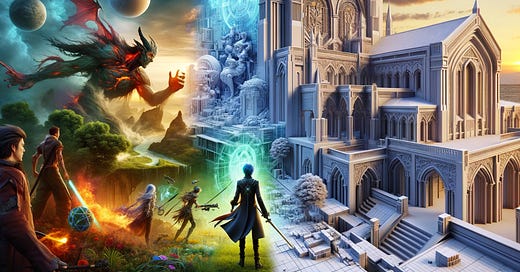Welcome to episode S02/E42 of our XR Glossary series. Today, we're focusing on Subdivision Surfaces, a sophisticated geometric modeling technique pivotal in creating detailed and refined 3D models in Extended Reality (XR). This episode will explore the role of subdivision surfaces in XR, their applications, and the challenges they present in this rapidly evolving field.
Understanding Subdivision Surfaces:
Subdivision surfaces are a method in computer graphics for creating smooth and detailed surfaces through an iterative process of subdividing and refining the geometry of a model. Originating from the field of animation and visual effects, this technique has become essential in XR for its ability to produce high-quality, detailed models that are crucial for immersive experiences.
Importance in XR Modeling:
In XR, subdivision surfaces are vital for:
Enhanced Realism: They allow for the creation of complex and smooth models, which are essential for the immersive and realistic environments expected in XR applications.
Modeling Flexibility: This technique offers a balance between the detail of the model and the ability to control its complexity, which is particularly important for maintaining performance in real-time XR environments.
Applications and Use Cases:
Subdivision surfaces are utilized in various XR scenarios:
VR Gaming: In virtual reality gaming, subdivision surfaces are used to create intricate character models and detailed environmental assets, enhancing the immersive quality of the game world.
Architectural Visualization: Architects and designers use subdivision surfaces in AR applications to render detailed and accurate representations of buildings and interior spaces.
Challenges and Optimization:
While subdivision surfaces offer significant benefits, they also come with challenges:
Managing Complexity: The increased polygon count from subdivision can be computationally intensive, posing a challenge for real-time rendering in XR environments.
Optimization Techniques: Developers employ various optimization strategies, such as level-of-detail (LOD) adjustments and efficient texturing methods, to ensure that models created with subdivision surfaces perform well in XR applications.
List of Marketing Cases using subdivision surfaces.
Automotive Visualization: Car manufacturers like Audi, BMW, and Mercedes-Benz often create high-fidelity 3D models of their vehicles for interactive marketing experiences, where subdivision surfaces could be used for detailing car models in VR showrooms.
Fashion and Retail: Luxury fashion brands, such as Gucci or Louis Vuitton, might use subdivision surfaces in creating detailed 3D models of their products for AR try-on experiences or virtual showcases.
Real Estate and Architectural Visualization: Companies like Zaha Hadid Architects or Gensler could employ subdivision surfaces to create detailed architectural visualizations for marketing high-end real estate projects or commercial developments.
Film and Entertainment Promotions: Movie studios like Disney and Warner Bros. may use subdivision surfaces in creating detailed 3D promotional materials or interactive XR experiences tied to film releases.
Consumer Electronics: Tech companies like Apple or Samsung could utilize subdivision surfaces in their marketing materials, especially for product launches or interactive demos that involve detailed 3D renderings of their devices.
Interactive Experiences at Events: Subdivision surfaces might be used in creating detailed models for interactive experiences at major events like CES, E3, or the Mobile World Congress.
Theme Parks and Attractions: Companies like Universal Studios or Disney Parks could use subdivision surfaces in designing immersive XR experiences or virtual rides for marketing their theme parks.
Video Game Marketing: Video game developers and publishers, such as Blizzard Entertainment or Electronic Arts, likely use subdivision surfaces for creating high-quality 3D assets used in marketing materials for their games.
XR Glossary
Ambisonics 360° (S01/E24)
Alignment Initialization (S01/E13)
AR Anchor Techniques (S01/E02)
AR Cloud explained (S01/03)
AR markers (S01/E05)
AR Collaboration (S01/E08)
Assisted Reality (S01/14)
Brain-Computer Interface (S01/E21)
CAVE (S01/E18)
Dynamic Reflection in XR(S01/E28)
Emotion Tracking (S01/E20)
FoV (S01/E15)
Freeform Optics in Extended Reality (S01/E33)
Geospatial Augmented Reality (S01/E11)
Hand Tracking Devices in XR (S01/E25)
Haptic feedback (S01/09)
Head-Mounted Displays (HMDs) (S01/E17)
Holistic Video in XR (S01/E36)
Light Field Display (S01/E10)
Markerles AR (S01/E07)
Occlusion (S01/06)
Pass-through technology (S01/E12)
Points of Interest (S01/E27)
SLAM - Simultaneous Localization and Mapping (SLAM) (S01/E01)
Spatial Body Language (S01/E19)
Skeleton View (S01/E16)
Exploring Waveguides (S01/E32)
Web AR technology (S01/E04)




